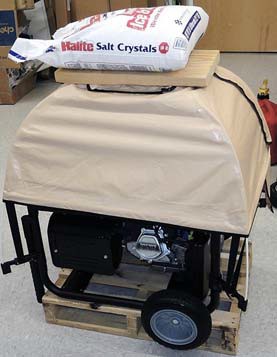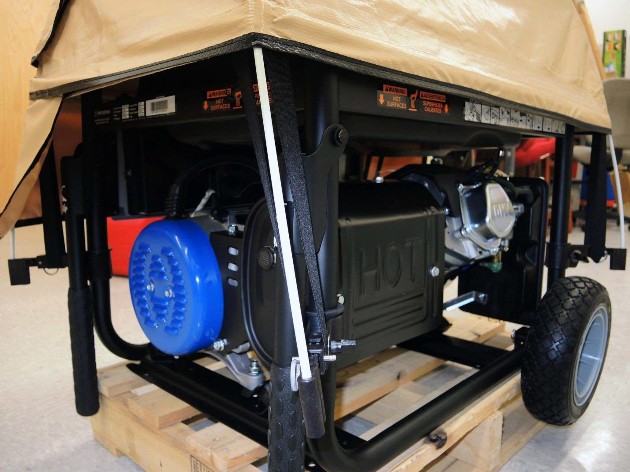Snow Load Durability Testing

The engineered sloped sides of the GenTent make it difficult for any significant amount of snow to accumulate on the canopy. Although it is possible for a significant depth of snow to accumulate on the very center of the GenTent, snow elsewhere on the GenTent canopy easily sheds away as illustrated above.
The weight of snow is determined by many weather factors and varies greatly. In general, colder air temperatures result in lighter snow, while snow formed in warmer air temperatures and old fallen snow are heavier. This variation is due to different types of snow crystals formed by different weather conditions.
In addition to recording the depth of a snowfall, it is also common practice to melt fallen snow and record the water-equivalent depth; the result is a ratio of snow-to-water depth. In the United States, this ratio for newly fallen snow typically falls in the 8:1 - 20:1 range; the standard value used by the US National Weather Service for converting snowfall into liquid water is 13:1.

Heavy Snow Load Simulation Test
To simulate the weight of an extreme quantity of snow accumulation, a hole was drilled through a 2” x 8” (nominal) board to provide clearance for separator protruding from the GenTent center connect. A 50 LBS bag of Halite salt crystals was placed on the board, totaling 55.5 LBS.
Over the 799 in2 area covered by the GenTent, 55.5 LBS would be equivalent to the mass of 1.905” of water at 0 °C. Assuming a 10:1 ratio, a wet and heavy snow, 1.9” of water would be equivalent to 19” of snow distributed over the entire canopy surface.
The flexible fiberglass frame rods bowed significantly, and the GenTent frame clamps deflected due to the weight of the snow-equivalent mass. Otherwise, the GenTent supported the weight with no damage to the clamps and fiberglass support rods. All components returned to their original shape and form-factor soon after the 55.5 LB bag and board were removed.

